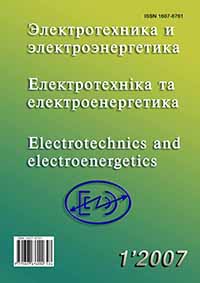HYBRID REED - SOLID-STATE DEVICES ARE A NEW GENERATION OF PROTECTIVE RELAYS
Keywords:
relay, device, protection, generationAbstract
Author’s approach allows viewing the problem of re-equipment of relay protection in a new way. In theauthor’s opinion combination of reed switches with magnetic circuits and semiconductor elements opens
new avenues in development of the promising protective relays featuring reliability, simplicity and low cost.
Examples of protective relays made with these elements are given below.
References
Gurevich V. Microprocessor Protection Relays: New Prospects or New Problems? – Electrical Engineering & Electromechanics – 2006. – N3.
Гуревич В. И. Альтернативный взгляд на микропроцессорные реле защиты. - PRO электричество. – 2006.– N 2 (18). – C. 20 – 23.
Gurevich V. Electric Relays: Principles and Applications. CRC Press (Taylor & Francis Group), New York – London 2005 – 704 p.
Gurevich V. Protection Devices and Systems for HighVoltage Applications. Marcel Dekker, Inc., New York - Basel, 2003. – 292 p.
Гуревич В. И. Высоковольтные устройства автоматики на герконах. Хайфа, 2000. –368 с.
Гуревич В. И. «Ренессанс» электромеханических реле защиты? – PRO электричество. – 2006. – N 3 (19). – с. 21 – 25.
Gurevich V. Simple Very High-Speed Overcurrent Protection Relay. - Electrical Engineering &Electromechanics. – 2007 – N1.
Downloads
How to Cite
Issue
Section
License
Copyright (c) 2017 V. Gurevich

This work is licensed under a Creative Commons Attribution 4.0 International License.
Creative Commons Licensing Notifications in the Copyright Notices
Authors who publish with this journal agree to the following terms:
Authors retain copyright and grant the journal right of first publication with the work simultaneously licensed under aCreative Commons Attribution License that allows others to share the work with an acknowledgement of the work's authorship and initial publication in this journal.
Authors are able to enter into separate, additional contractual arrangements for the non-exclusive distribution of the journal's published version of the work (e.g., post it to an institutional repository or publish it in a book), with an acknowledgement of its initial publication in this journal.
Authors are permitted and encouraged to post their work online (e.g., in institutional repositories or on their website) prior to and during the submission process, as it can lead to productive exchanges, as well as earlier and greater citation of published work.

